
Electricity, an invisible yet omnipresent force, underpins nearly every facet of our modern existence, from the light illuminating our homes to the intricate operations of our digital devices. While its everyday utility is undeniable, the fundamental principles governing electricity and its rich history are often overlooked. Understanding these foundational elements is not merely an academic exercise; it empowers consumers with a deeper appreciation for the technologies they interact with daily and provides critical context for discussions surrounding energy reliability and efficiency.
This in-depth exploration aims to demystify electricity, presenting a clear and comprehensive overview of its key concepts and historical milestones. Drawing exclusively from rigorously documented scientific information, we will trace the journey of electricity from ancient observations of mysterious phenomena to the groundbreaking scientific advancements that transformed it from a mere curiosity into an indispensable tool for society. Our focus remains on providing accurate, detailed insights, ensuring that readers gain a robust understanding of this essential force.
In this first section, we embark on a historical journey, examining the initial sparks of curiosity that ignited humanity’s understanding of electricity. From the puzzling shocks delivered by electric fish to the systematic investigations of pioneering scientists, we will uncover the critical discoveries and theoretical leaps that laid the groundwork for the electric age. These early insights, often built on careful observation and relentless experimentation, set the stage for the dramatic technological revolutions that would follow, shaping the world as we know it today.

1. **Early Discoveries: From Electric Fish to Amber Rods**The earliest human encounters with phenomena we now understand as electrical date back millennia, long before any formal knowledge of electricity existed. Ancient Egyptian texts from as far back as 2750 BCE described electric fish as the “protectors” of all other fish, highlighting an awareness of their unique properties. Millennia later, ancient Greek, Roman, and Arab naturalists and physicians also reported on these creatures, demonstrating a sustained, albeit unexplained, recognition of their existence.
Notable ancient writers, including Pliny the Elder and Scribonius Largus, documented the numbing effect caused by shocks from electric catfish and electric rays. They even observed that these shocks could propagate along conducting objects, an early indication of electrical transmission. Intriguingly, these powerful jolts were sometimes leveraged for therapeutic purposes; patients suffering from ailments like gout or headaches were directed to touch electric fish, in the hope that the shock might offer a cure.
Beyond biological observations, ancient cultures around the Mediterranean also noticed that certain objects, such as rods made of amber, could attract light items like feathers after being rubbed with cat’s fur. Thales of Miletus, around 600 BCE, made a series of observations on this static electricity. He incorrectly believed that friction rendered amber magnetic, contrasting it with minerals like magnetite, which inherently possessed magnetic properties. While his conclusion was flawed, as later science would prove a distinct, yet linked, relationship between magnetism and electricity, Thales’ work represents one of the earliest recorded investigations into these mysterious attractive forces.

2. **The Dawn of Scientific Inquiry: Gilbert, Browne, and Newton**For millennia, electricity largely remained an intellectual curiosity, a series of unexplained phenomena rather than a subject of systematic scientific study. This began to change significantly in 1600 with the publication of “De Magnete” by the English scientist William Gilbert. Gilbert conducted a careful study of both electricity and magnetism, importantly distinguishing the effect produced by a lodestone (natural magnetism) from the static electricity generated by rubbing amber. His work was pivotal in setting electricity apart as its own distinct area of scientific inquiry.
Gilbert further advanced the understanding of these phenomena by coining the Neo-Latin word “electricus,” meaning “of amber” or “like amber,” derived from the Greek word “elektron” for amber. This groundbreaking term directly referred to the property of attracting small objects after being rubbed. This association laid the linguistic foundation for future electrical discourse. The English words “electric” and “electricity” subsequently made their first appearance in print in Thomas Browne’s “Pseudodoxia Epidemica” in 1646, marking their entry into common scientific vocabulary.
Isaac Newton also conducted early investigations into electricity, with ideas documented in his work ‘Opticks’ arguably considered the beginning of the field theory of the electric force. Further work was conducted in the 17th and early 18th centuries by other notable researchers, adding pieces to the emerging puzzle of electrical phenomena.
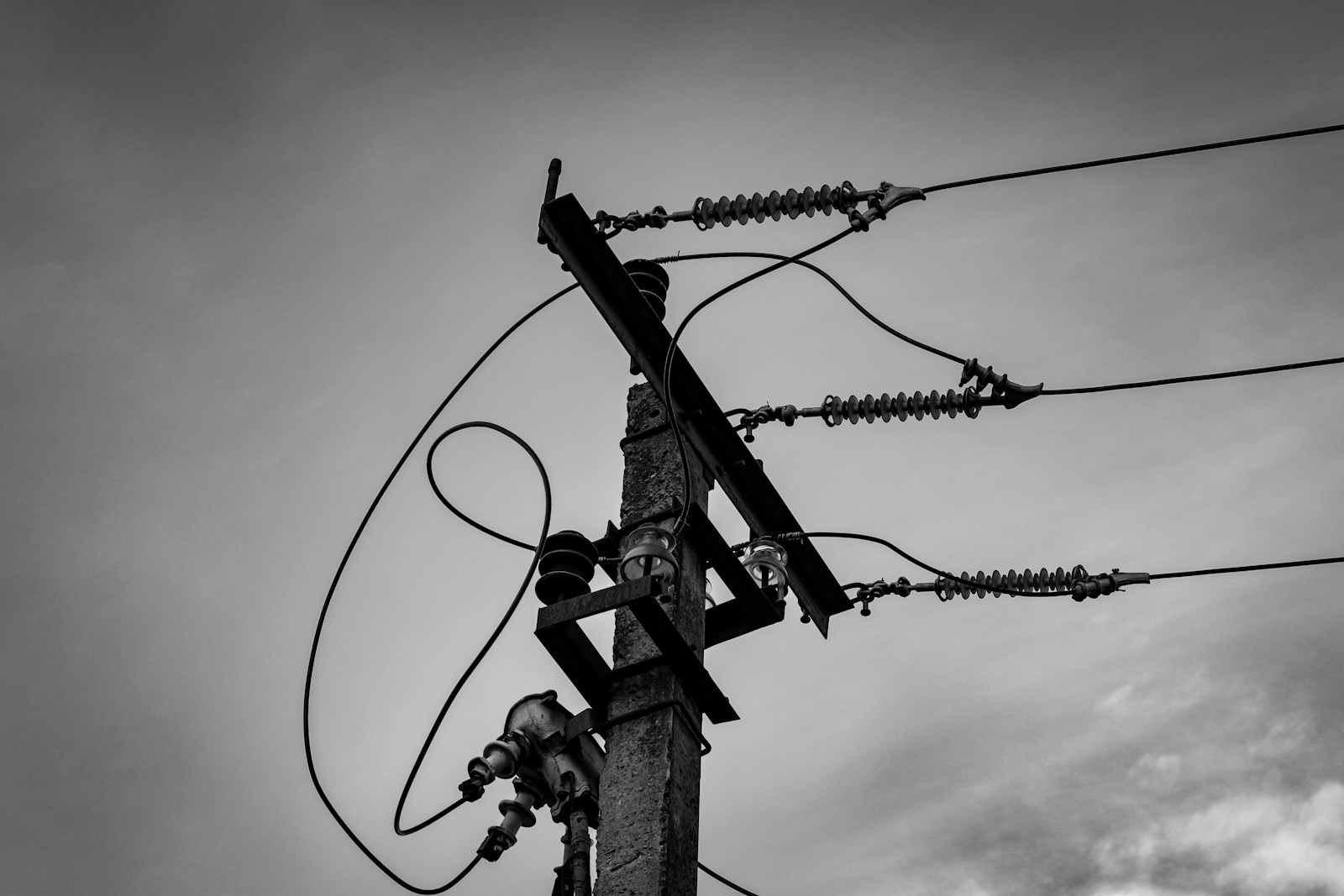
3. **Franklin’s Revolutionary Experiments: Lightning and Leyden Jars**The 18th century witnessed extensive and impactful research into electricity, with Benjamin Franklin standing out as a central figure. His dedication was so profound that he reportedly sold his possessions to fund his scientific endeavors, underscoring his commitment to understanding electrical phenomena. Franklin’s work was meticulously documented by Joseph Priestley in his 1767 publication, “History and Present Status of Electricity,” a testament to their collaboration through extended correspondence.
Franklin’s most famous and perhaps most daring experiment occurred in June 1752. He is reputed to have attached a metal key to the bottom of a dampened kite string and flown the kite into a storm-threatened sky. The succession of sparks that jumped from the key to the back of his hand provided compelling evidence. This dramatic demonstration proved that lightning was, indeed, electrical in nature, a revelation that fundamentally changed perceptions of this awe-inspiring natural phenomenon and underscored the practical dangers of electrical discharges.
Beyond the kite experiment, Franklin also provided crucial insights into the behavior of the Leyden jar, a device used for storing electrical charge. He explained its apparently paradoxical behavior, concluding that electricity consisted of both positive and negative charges. This concept was revolutionary, allowing for a clearer understanding of how charges could accumulate and discharge, and laying the groundwork for the modern understanding of charge polarization and storage, an essential principle in contemporary electronic components.

4. **Bioelectromagnetics and the Voltaic Pile: Galvani and Volta**As scientific inquiry into electricity progressed, researchers began to uncover its surprising connections to biological systems. In 1775, Hugh Williamson reported a series of experiments to the Royal Society, detailing the shocks delivered by the electric eel. That same year, the surgeon and anatomist John Hunter meticulously described the intricate structure of the fish’s electric organs. These observations provided early indications that living organisms could generate and utilize electrical impulses, challenging previous assumptions about the exclusive domain of inorganic electricity.
A pivotal moment in understanding the biological aspect of electricity came in 1791 when Luigi Galvani published his discovery of bioelectromagnetics. Galvani famously demonstrated that electricity served as the medium by which neurons transmitted signals to muscles, a groundbreaking insight into the nervous system’s function. His work, often involving frog legs, conclusively linked electrical phenomena to physiological processes, thereby establishing a new field of study and opening avenues for understanding how life itself operates at an electrical level.
The need for a reliable and continuous source of electrical energy for experimentation was critical, and this challenge was met by Alessandro Volta. In 1800, Volta invented the battery, known as the voltaic pile. Constructed from alternating layers of zinc and copper, this innovative device provided scientists with a more stable and dependable source of electrical energy than the cumbersome electrostatic machines previously employed. The voltaic pile represented a significant leap forward, offering a practical means to generate and sustain electric current for ongoing research, which profoundly accelerated electrical science.

5. **Unifying Forces: Ørsted, Ampère, and the Link to Magnetism**The early 19th century marked a profound shift in the understanding of electricity, leading to the recognition of its intrinsic connection with magnetism. This unity of electric and magnetic phenomena, collectively known as electromagnetism, was a pivotal discovery attributed to Hans Christian Ørsted and André-Marie Ampère between 1819 and 1820. Their independent yet complementary work irrevocably altered the scientific landscape, revealing a fundamental force governing the universe.
Ørsted’s breakthrough occurred accidentally in 1820 while he was preparing for a lecture. He observed that the current flowing through a wire caused the needle of a magnetic compass to deflect. This phenomenon was unexpected and revolutionary; it demonstrated a direct, tangible link between electricity and magnetism. Ørsted noted that “the electric conflict acts in a revolving manner,” describing how the force on the compass needle did not draw it towards or push it away from the wire, but instead acted at right angles to it. Furthermore, he observed that reversing the direction of the current also reversed the direction of the force, establishing a clear cause-and-effect relationship.
Following Ørsted’s discovery, Ampère rigorously investigated the phenomenon. He discovered that two parallel wires carrying electric currents exerted a force upon each other. Specifically, he found that wires conducting currents in the same direction were attracted, while those carrying currents in opposite directions were repelled. This interaction, mediated by the magnetic field each current produces, not only solidified the concept of electromagnetism but also formed the experimental basis for the international definition of the ampere, the standard unit of electric current. This convergence of electric and magnetic forces, distinct from gravitational and electrostatic forces, profoundly expanded scientific understanding.
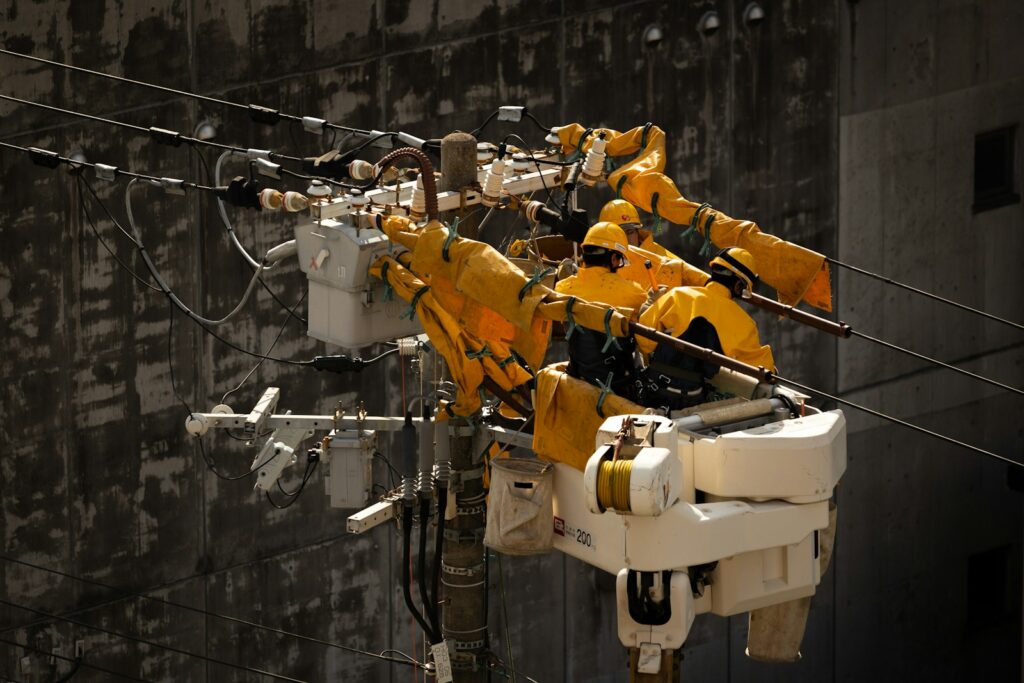
6. **Faraday’s Breakthroughs: Motors, Generators, and Induction**The burgeoning understanding of electromagnetism, particularly the relationship between magnetic fields and electric currents, paved the way for monumental technological advancements. This direct link was brilliantly exploited by Michael Faraday, who, in 1821, invented the first electric motor. Faraday’s homopolar motor was a simple yet revolutionary device: it consisted of a permanent magnet submerged in a pool of mercury, with a wire suspended from a pivot above the magnet and dipping into the mercury. When current was passed through the wire, the magnet exerted a tangential force, causing the wire to continuously circle around the magnet as long as the current was maintained. This invention demonstrated the practical conversion of electrical energy into mechanical motion, a cornerstone of modern machinery.
Faraday’s relentless experimentation continued, leading to another profound discovery in 1831: electromagnetic induction. He found that a wire moving perpendicular to a magnetic field developed a potential difference across its ends. This crucial observation led him to formulate the principle now known as Faraday’s law of induction, which states that the potential difference induced in a closed circuit is directly proportional to the rate of change of magnetic flux through the loop. This law provides the fundamental explanation for how changing magnetic fields can generate electricity.
The exploitation of electromagnetic induction enabled Faraday to invent the first electrical generator in 1831. His “Faraday’s disc” converted the mechanical energy of a rotating copper disc into electrical energy. While Faraday’s disc proved inefficient and was not practical for widespread use as a generator, it unequivocally demonstrated the possibility of generating electric power using magnetism. This discovery served as an inspiration for subsequent inventors and engineers, fundamentally influencing the development of large-scale electricity generation systems that would power the Second Industrial Revolution and continue to operate worldwide today.

7. **The Charge Carriers: Electrons, Protons, and the Elementary Charge**At the core of all electrical phenomena lies the concept of electric charge, a fundamental property of matter. By modern convention, the charge carried by electrons is defined as negative, while that carried by protons is positive. This convention, though arbitrary in its initial assignment, remains globally accepted. Historically, Benjamin Franklin had defined a positive charge as the charge acquired by a glass rod when rubbed with a silk cloth, establishing an early reference point for understanding charge polarity.
The magnitude of this charge is precisely quantifiable: a proton, by definition, carries a charge of exactly 1.602176634×10−19 coulombs. This specific value is known as the elementary charge, representing the smallest possible isolated unit of electric charge. No object can possess a charge smaller than this elementary unit, and any amount of charge an object carries will always be a multiple of it. An electron carries an equal but negative charge of −1.602176634×10−19 coulombs.
The presence of charge gives rise to the electrostatic force, where charges exert forces on one another—an effect recognized, though not fully understood, in antiquity. Experiments conducted by Charles-Augustin de Coulomb in the late 18th century systematically investigated these forces. He deduced that charge manifests in two opposing forms, leading to the well-known axiom: like-charged objects repel, and opposite-charged objects attract.
The magnitude of this electromagnetic force, whether attractive or repulsive, is precisely described by Coulomb’s law. This law states that the force is proportional to the product of the charges and inversely proportional to the square of the distance between them. The electromagnetic force is incredibly strong, second only to the strong interaction among the four fundamental forces of nature. It operates over all distances, unlike the strong interaction.
Electric charge is a conserved quantity; the net charge within an electrically isolated system will always remain constant, regardless of any internal changes. Within such a system, charge can be transferred between bodies either through direct contact or by passing along a conducting material, such as a wire. The informal term “static electricity” refers to a net presence or imbalance of charge on a body, typically resulting from dissimilar materials being rubbed together, causing charge transfer.
Having journeyed through the historical tapestry of electricity and understood the fundamental nature of electric charge, we now turn our attention to the core concepts that govern its behavior and its transformative role in modern society. This section will delve into the mechanics of electric current, fields, potential, and circuits, alongside discussions on electric power, modern electronics, electromagnetic waves, and the practicalities of energy generation and transmission. Our goal is to provide clear, detailed insights, empowering consumers with a robust understanding of how electricity operates in their daily lives and the technologies it enables.

8. **Electric Current: The Flow of Charge**Electric current is fundamentally the movement of electric charge, typically measured in amperes. While most often involving electrons, any moving charged particles constitute a current. This flow occurs only through electrical conductors, never insulators.
By convention, positive current flows from a circuit’s positive to negative parts. This ‘conventional current’ means negatively charged electrons, the common carriers, move oppositely. This established convention simplifies understanding despite varying particle movement.
Electrical conduction depends on charge carriers and material. Examples include metallic conduction (electrons in metals) and electrolysis (ions in liquids or plasmas). Though individual carriers move slowly, the electric field propagates near light speed, ensuring rapid signal transmission.
Current produces key effects: localized heating (Joule’s work) and electromagnetism (Ørsted’s discovery). High electromagnetic emissions from arcing can cause interference. Practically, current is either direct current (DC), a unidirectional flow from sources like batteries, or alternating current (AC), which repeatedly reverses direction, efficiently delivering energy through alternating pulses. AC is uniquely influenced by inductance and capacitance.
Read more about: Electricity Unveiled: A Consumer Guide to Its Fundamental Concepts, History, and Modern Applications
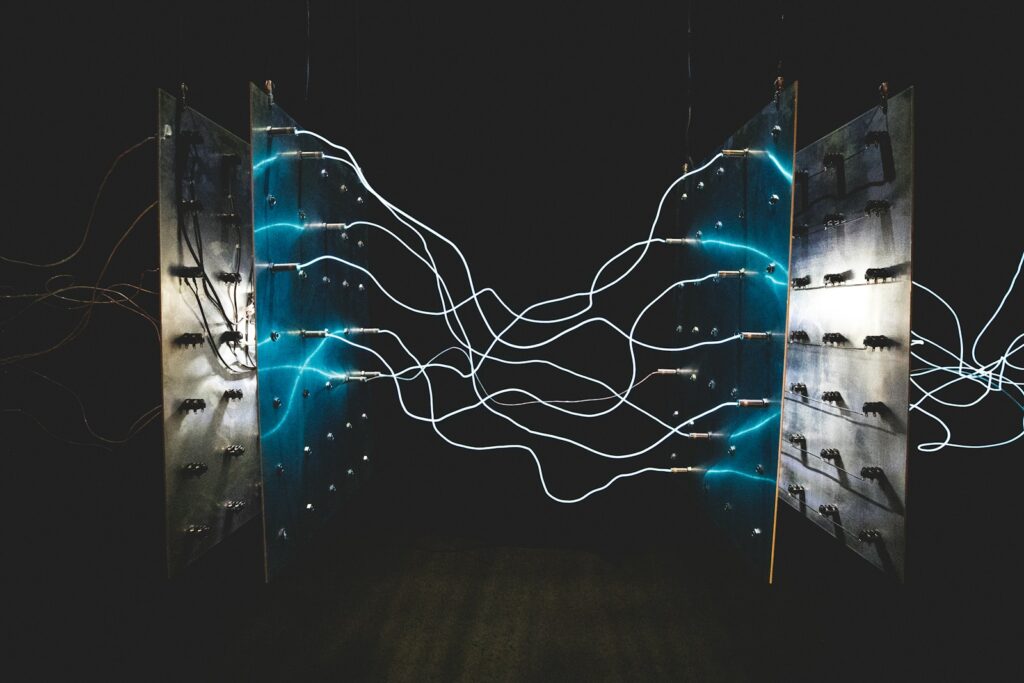
9. **Electric Field: The Invisible Force Influencer**The electric field, a concept pioneered by Michael Faraday, describes the force exerted by a charged body on other charges within its surrounding space. Like gravity, it extends infinitely and weakens with the inverse square of distance. However, unlike gravity’s universal attraction, an electric field can also repel, a critical distinction. Despite gravity’s dominance over cosmic distances, the electric field remains fundamental to all electrical interactions.
An electric field’s strength at any point is the force a stationary, negligible ‘test charge’ would experience per unit of charge. Being a vector, it has both magnitude and direction. Faraday’s ‘lines of force,’ or field lines, visually represent this, originating at positive charges, terminating at negative charges, and entering conductors perpendicularly, never crossing.
Electrostatics, the study of fields from stationary charges, is vital for high-voltage design. Every medium has a limit before electrical breakdown, causing an arc. Air, for example, arcs across small gaps at over 30 kV/cm. Lightning, a massive natural discharge, exemplifies this, where cloud charge separation generates fields exceeding air’s breakdown strength.
Field strength intensifies significantly around sharp points on conductors. This principle is employed in lightning conductors, whose sharp spikes encourage strikes at that location. Safely diverting the powerful discharge to ground, lightning rods protect structures from devastating damage.

10. **Electric Potential: The ‘Height’ of Electrical Energy**Electric potential is intricately linked to the electric field, quantifying the energy needed to move a unit test charge from infinity to a specific point. Measured in volts, one volt means one joule of work per coulomb of charge. More practically, electric potential difference, or voltage, measures the energy to move a unit charge between two specified points, crucial for circuit analysis.
As the electric field is conservative, the work done (potential difference) between any two points is independent of the path taken, ensuring a unique value. For convenience, Earth is typically designated as a uniform reference point, or ‘ground,’ assumed to be an infinite, unchargeable source and sink of charge.
Electric potential is a scalar quantity, having only magnitude. It is analogous to height in a gravitational field: a charge ‘falls’ across voltage difference. Equipotentials, lines connecting points of equal potential, are drawn around charged objects, similar to contour lines. These lines cross field lines at right angles and run parallel to a conductor’s surface.
Moreover, the electric field can be defined as the local gradient of the electric potential, typically expressed in volts per meter. The field’s vector direction follows the line of greatest potential slope, and its magnitude is greatest where equipotential lines are closest together.
Read more about: Unlock Your Brain’s Full Potential: 14 Essential Steps for Lifelong Cognitive Health

11. **Electromagnetism: Unifying Electricity and Magnetism**Ørsted’s 1821 discovery profoundly linked electricity and magnetism, showing a magnetic field forms around a current-carrying wire. This interaction differed from gravity and electrostatics, acting at right angles to the wire. Ørsted noted the reciprocal nature: a current influences a magnet, and a magnetic field influences a current.
André-Marie Ampère extended these findings, demonstrating that two parallel current-carrying wires exert forces. Wires with currents in the same direction attract, while those with opposing currents repel. This interaction, mediated by each current’s magnetic field, formed the experimental basis for the international definition of the ampere.
This fundamental relationship is vital, underpinning countless modern technologies. Michael Faraday, recognizing its potential in 1821, invented the first electric motor. His homopolar motor converted electrical energy directly into continuous mechanical motion by exploiting the force on a current-carrying wire within a magnetic field, paving the way for all subsequent motor designs.
Faraday’s further experimentation led to electromagnetic induction in 1831: a potential difference generates across a wire moving perpendicularly through a magnetic field. This insight, formalized as Faraday’s law of induction, explains how changing magnetic fields generate electricity, enabling his invention of the first electrical generator, the ‘Faraday’s disc,’ a critical step toward large-scale electricity generation.
Read more about: Electricity Unveiled: A Consumer Guide to Its Fundamental Concepts, History, and Modern Applications

12. **Electric Circuits: Orchestrating the Flow of Energy**An electric circuit is an interconnected assembly of components guiding electric charge along a closed path to perform a useful task. Components range from basic resistors, capacitors, and switches to complex transformers and advanced electronics. The simplest circuits often involve passive and linear components, which may store energy but don’t generate it, exhibiting predictable responses to stimuli.
Among passive elements, the resistor impedes current flow, converting electrical energy into heat. This resistance arises from electron-ion collisions within a conductor. Ohm’s law, a circuit theory cornerstone, states current through a resistance is proportional to the potential difference across it. ‘Ohmic’ materials have constant resistance over ranges. The ohm (Ω), unit of resistance, honors Georg Ohm: one ohm yields one volt potential difference for one ampere current.
The capacitor, an evolution of the Leyden jar, stores electric charge and energy within an electric field. It consists of two conductive plates separated by a thin insulating dielectric. Modern capacitors use coiled metal foils to maximize surface area and capacitance. The farad (F), named after Michael Faraday, is the unit. A capacitor initially allows current during charging but eventually blocks steady-state direct current, crucial for filtering and timing circuits.
Conversely, the inductor, typically a wire coil, stores energy in a magnetic field in response to current. Changes in current alter the magnetic field, inducing a voltage across the inductor’s ends, proportional to the current’s rate of change. This proportionality constant is inductance, measured in henries (H), honoring Joseph Henry. An inductor readily permits unchanging current but strongly opposes rapid changes, vital for applications requiring impedance to alternating currents.
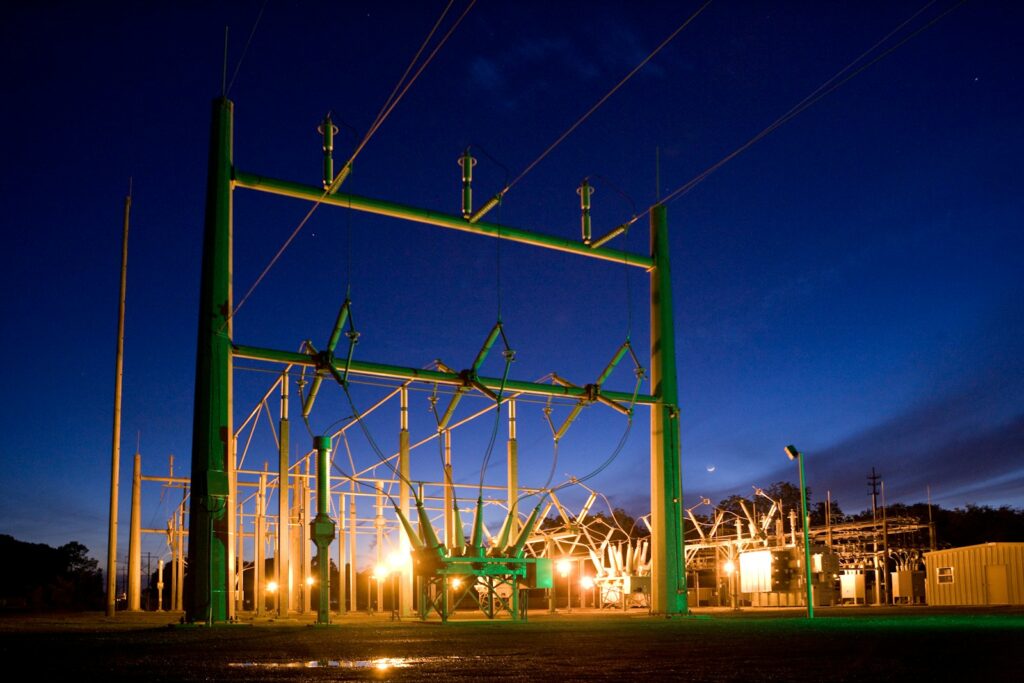
13. **Electric Power: The Engine of Modern Life**Electric power quantifies the rate at which electric energy is transferred by an electric circuit, driving modern technologies and conveniences. The SI unit is the watt, defined as one joule per second. Colloquially, ‘wattage’ refers to electric power in watts, a familiar concept for consumers evaluating appliances.
Conceptually like mechanical power, electric power is calculated by the simple formula: P = IV, where ‘P’ is power in watts, ‘I’ is electric current in amperes, and ‘V’ is electric potential difference (voltage) in volts. This equation highlights power as a direct product of charge flow and the electrical ‘push’ driving it.
For businesses and homes, electric power is typically supplied by the electric power industry. Consumers purchase electricity by the kilowatt-hour (kWh), representing 3.6 megajoules, which is the product of power in kilowatts multiplied by usage duration in hours. Electricity meters precisely track the electrical energy delivered to each customer for accurate billing.
Beyond its utility, electricity is a low-entropy energy form, convertible into motion, light, or heat with remarkably high efficiency compared to fossil fuels. This intrinsic efficiency underscores its pivotal role in sustainable energy solutions and its importance in optimizing energy use and minimizing environmental impact.
Read more about: Pixels and Power: A Nostalgic Dive into 14 Iconic ’80s Computer Brands That Shaped the Digital Revolution
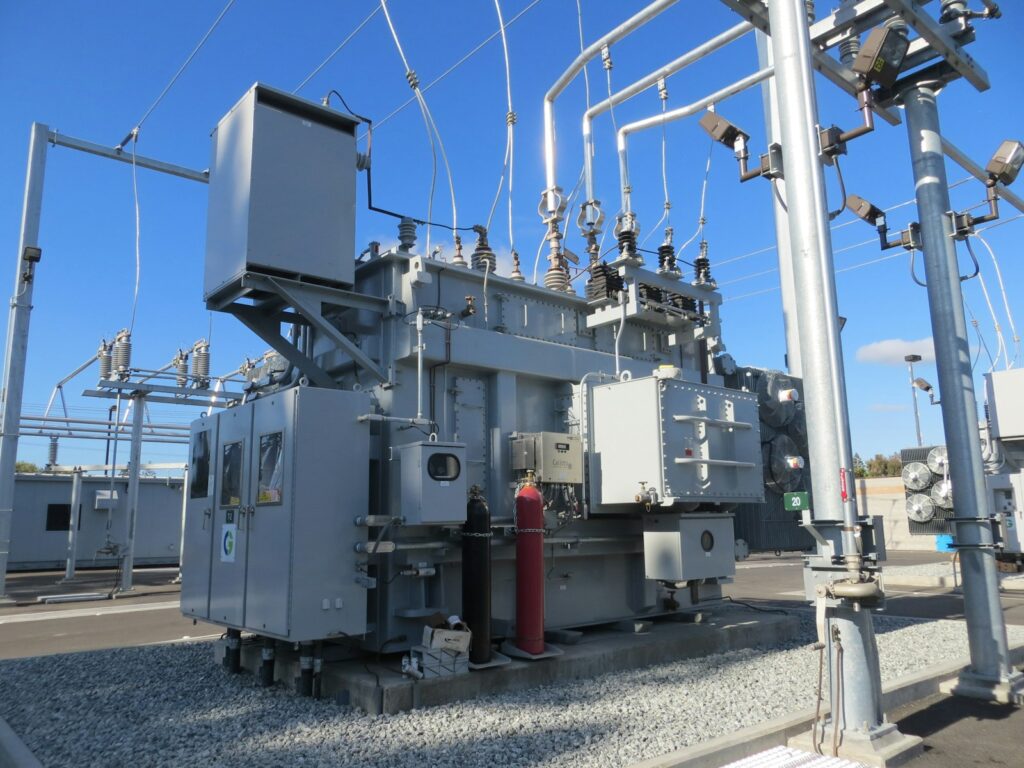
14. **Modern Electronics, Electromagnetic Waves, and Global Energy Infrastructure**Modern electronics leverages sophisticated circuits with active components like transistors, diodes, and integrated circuits, alongside passive interconnection. This enables digital switching, making electronics indispensable for information processing, telecommunications, and signal processing. Semiconductor components, rooted in solid-state physics, form the backbone of these devices. The transistor, a pivotal 20th-century invention, is a fundamental building block, with integrated circuits housing billions of miniaturized components.
The profound interrelationship between electricity and magnetism, revealed by Faraday and Ampère, culminates in electromagnetic waves. James Clerk Maxwell’s 1864 equations described the dynamic interplay of electric fields, magnetic fields, charge, and current, proving these waves travel at light speed in a vacuum, thus identifying light as electromagnetic radiation. This unification is a theoretical physics milestone. Electronics convert signals into high-frequency currents, allowing radio wave transmission and reception over immense distances, reshaping global communication.
Large-scale electrical power generation primarily uses electromechanical generators, driven by steam from fossil fuels or nuclear reactions, or directly by wind and flowing water. Sir Charles Parsons’ 1884 steam turbine exemplifies converting thermal energy into rotary motion for generators, relying on Faraday’s induction. Photovoltaic cells in solar panels directly convert solar radiation into electricity, a clean and vital energy source.
As nations modernize, electricity demand rapidly grows, a trend seen globally. Efficient power transmission over vast distances is critical; the late 19th-century transformer invention was revolutionary, enabling higher voltage, lower current transmission, drastically reducing losses. Environmental concerns regarding fossil fuels spur a global pivot to increasingly cost-effective renewable sources like wind and solar, accelerating the energy transition.
Read more about: The Foundational Elements of Modern Electrification: A Comprehensive Overview for the Discerning Reader
Electricity, from its ancient mysteries to its modern manifestations, has consistently proven itself to be an indispensable force. Its profound impact on daily life, from illuminating homes to enabling instant global communication and powering complex computational systems, is undeniable. As we continue to innovate and refine our understanding and utilization of this versatile energy form, electricity will undoubtedly remain the bedrock of industrial society and a key driver of future progress, ensuring a future powered by its enduring, invisible might.


